Welcome to the delightful world of succulents, where even the tiniest leaf holds the promise of new life! Whether you’re just starting your gardening journey or you’ve already amassed an impressive collection of vibrant plants, propagating succulents can be an incredibly rewarding experience. This guide is your trusty companion, ready to reveal the perfect moments to multiply your beloved succulents and fill your home with even more of their charming presence.
In these pages, you’ll find a carefully curated list of succulents that are perfect for propagation, chosen for their resilience and beauty. Knowing when to propagate is just as crucial as how, and this guide will arm you with that knowledge, ensuring your success every step of the way. By the time you finish, you’ll not only have expanded your garden but also your confidence as a gardener, ready to tackle even more exciting plant projects. Get ready to immerse yourself in the joys of succulent propagation and enjoy the fruits—rather, the leaves—of your labor!
String of Pearls (Senecio rowleyanus)
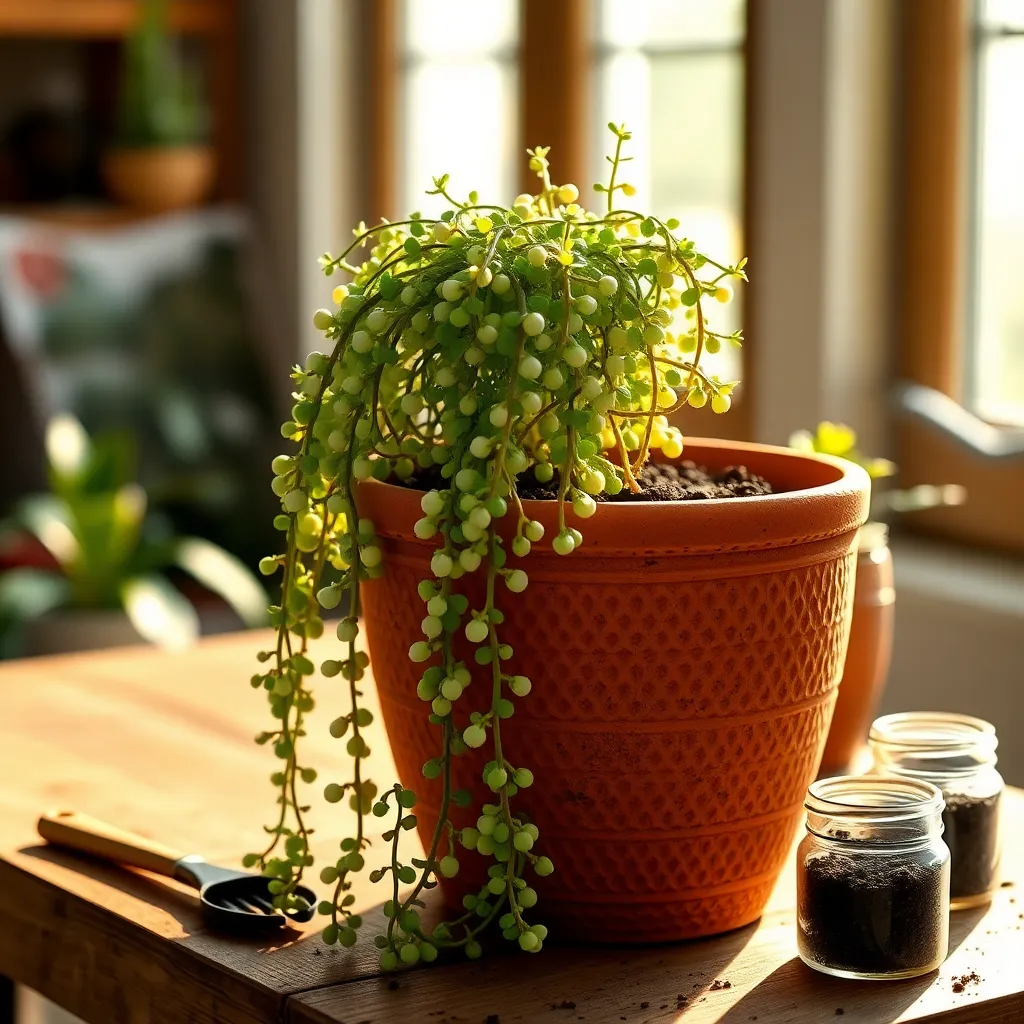
When it comes to propagating the String of Pearls (Senecio rowleyanus), the best time is during the active growing season, typically in spring or early summer. This is when the plant is most vigorous, increasing the chances of successful propagation.
For beginners, a simple method involves taking a cutting from a healthy stem, ideally 4 to 6 inches long. Allow the cutting to dry for a day or two until the cut end forms a callous, which helps prevent rot when planted.
Once the cutting is ready, plant it in a well-draining soil mix, such as a combination of cactus soil and perlite. Place the container in a spot with bright, indirect light and water sparingly, enough to keep the soil slightly moist but not soggy.
Advanced gardeners may experiment with water propagation for a quicker root development. Simply place the cut end in water, ensuring only the stem and not the leaves are submerged, and change the water every few days to keep it fresh.
Regardless of the method, after roots have developed, usually within a few weeks, you can plant the cuttings in individual pots. Regularly check for signs of growth and adjust care as needed, providing more light and slightly increasing water as the plants mature.
Burro’s Tail (Sedum morganianum)
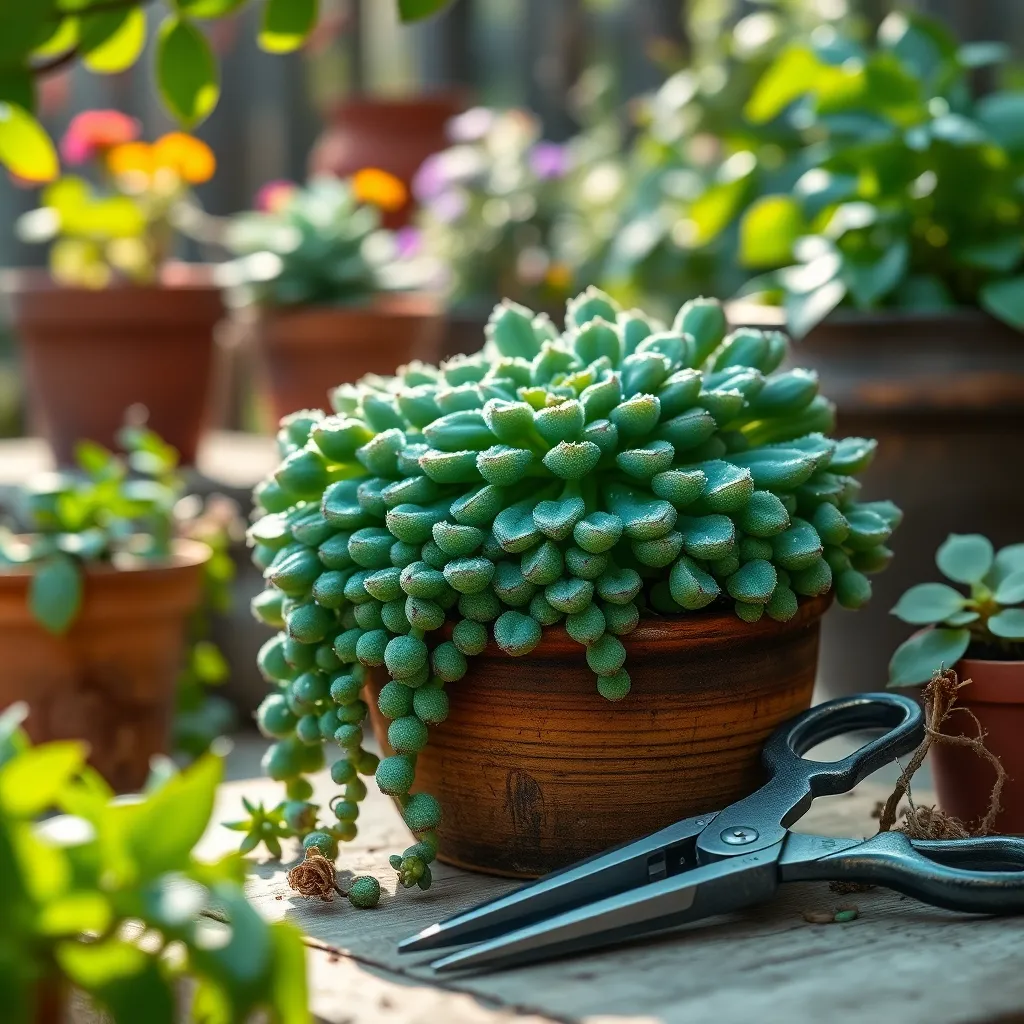
Propagating Burro’s Tail (Sedum morganianum) is a rewarding experience that is best undertaken during the warm growing months of spring and summer. These periods provide ideal conditions for rooting, as the plant is naturally more active and the cuttings are more likely to thrive.
To begin, gently remove a few healthy leaves from the stem, ensuring each one is intact and unbruised. Allow the leaves to dry for a day or two until the ends form a callus, which helps prevent rot when placed in soil.
Once callused, place the leaves on top of a well-draining soil mix, such as a combination of cactus soil and perlite. Avoid burying the leaves; simply lay them on the surface and mist with water every few days to encourage rooting without waterlogging.
For more advanced gardeners, consider using a heat mat to maintain a steady temperature around 70°F (21°C), which can speed up the rooting process. Keep the propagation area in bright, indirect light, as direct sunlight can scorch the delicate leaves and hinder growth.
Panda Plant (Kalanchoe tomentosa)
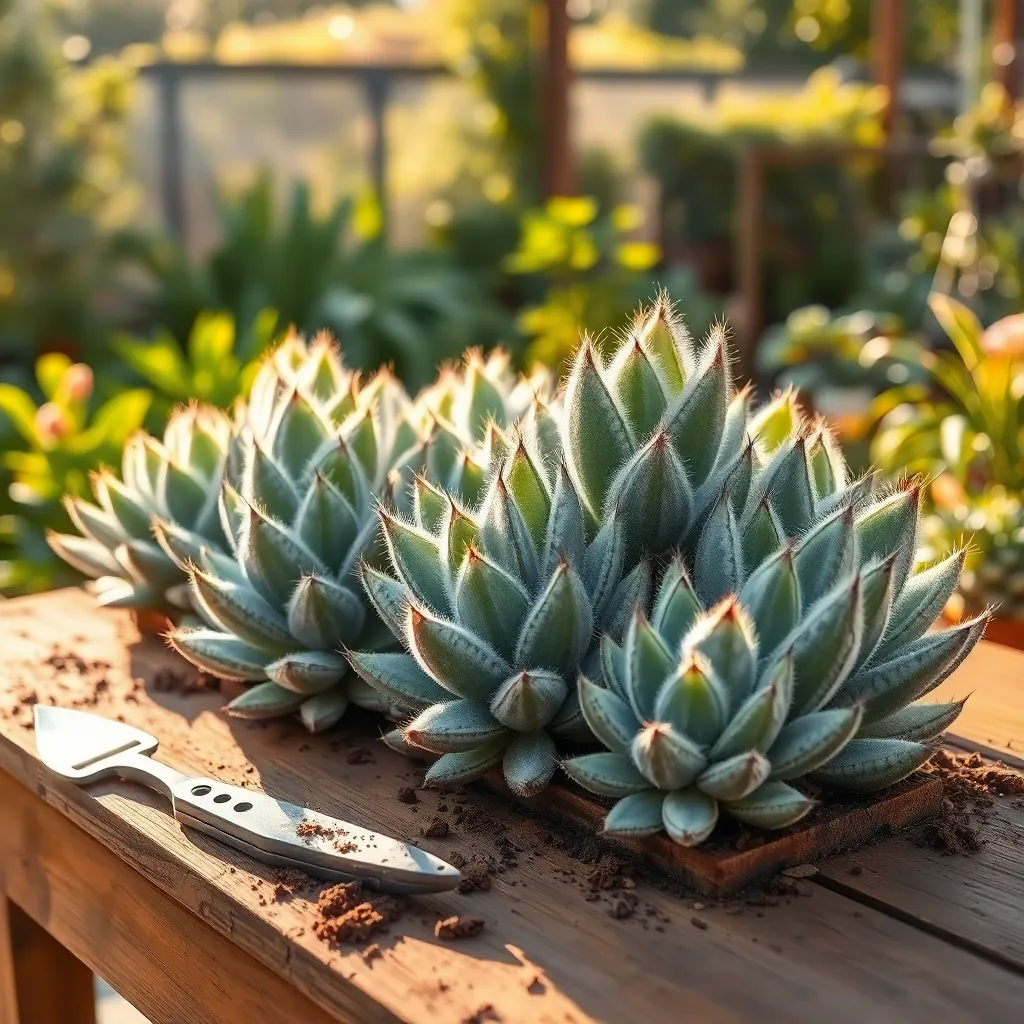
Panda Plant, or Kalanchoe tomentosa, is a charming succulent known for its velvety leaves edged with dark tips. To propagate this succulent successfully, timing is crucial, with spring and early summer being the best periods when the plant is actively growing.
Before you begin propagation, ensure you have a healthy parent plant with firm leaves, as these will yield better results. It’s advisable to use a sterile knife or scissors to take a leaf cutting, which helps prevent infections and diseases.
Once you’ve secured your cutting, allow it to dry for a couple of days until a callus forms over the cut edge to prevent rot. Afterward, plant the callused leaf in a well-draining soil mix, such as a blend of cactus soil and perlite, which will support optimal root development.
Place the potted cutting in a spot with bright, indirect light, ensuring the soil remains slightly moist but never waterlogged. Water sparingly, allowing the top inch of soil to dry out between waterings, as overwatering is a common cause of failure in succulent propagation.
Ghost Plant (Graptopetalum paraguayense)
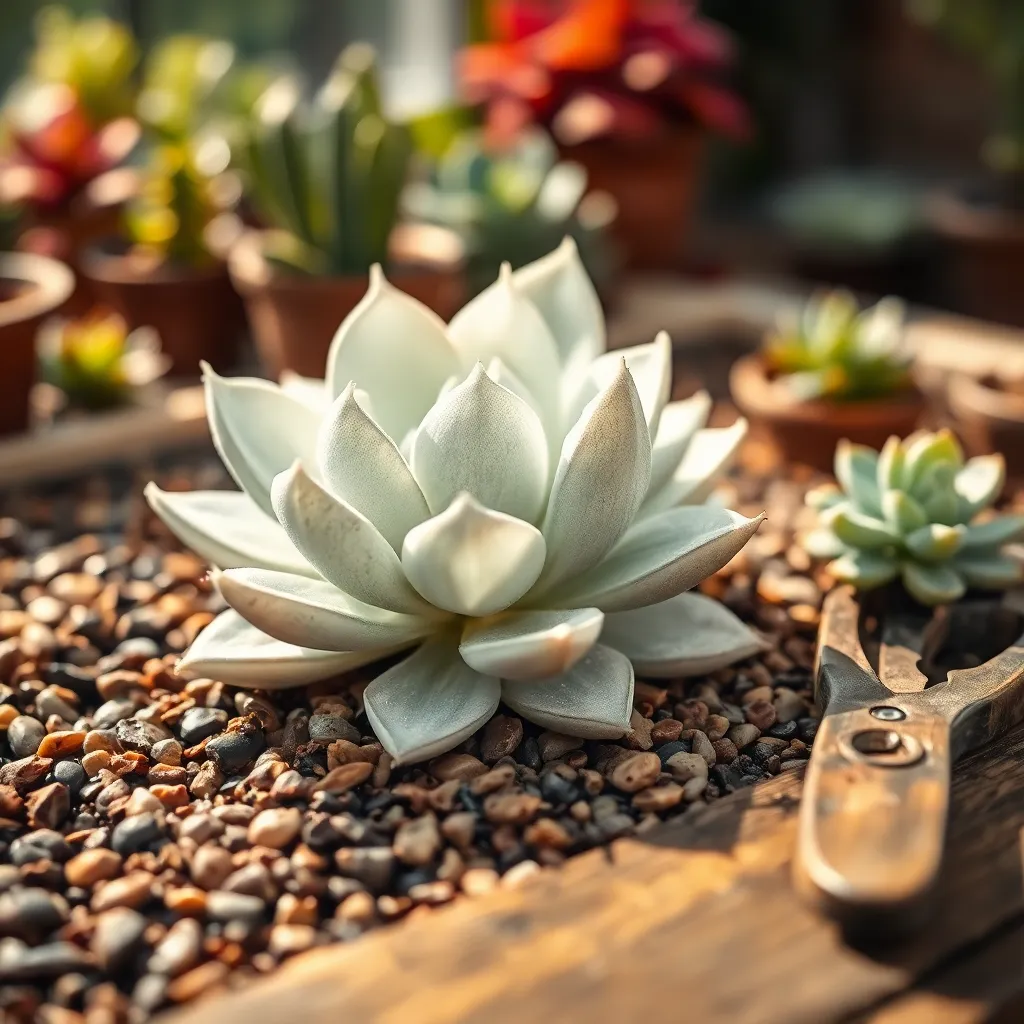
The Ghost Plant, scientifically known as Graptopetalum paraguayense, is a succulent that thrives in well-draining soil. To propagate this plant successfully, consider using a mix of cactus soil and perlite for optimal drainage.
Spring is the ideal time to propagate Ghost Plants as they are naturally in an active growth phase. During this period, the chances of rooting are higher, giving you more robust plants.
Begin propagation by gently removing a healthy leaf from the mother plant, ensuring it is whole without any tears. Allow the leaf to callous over for a few days in a dry, shaded area to prevent rot.
Once the leaf has calloused, place it on top of the soil mix without burying it. Mist the leaf lightly every few days to maintain slight moisture, but be careful not to overwater, which can lead to rot.
For advanced growers, consider using a heat mat to increase the soil temperature slightly, accelerating root development. Additionally, providing bright, indirect light will encourage healthy growth, but avoid direct sunlight, which can scorch young plants.
Flaming Katy (Kalanchoe blossfeldiana)
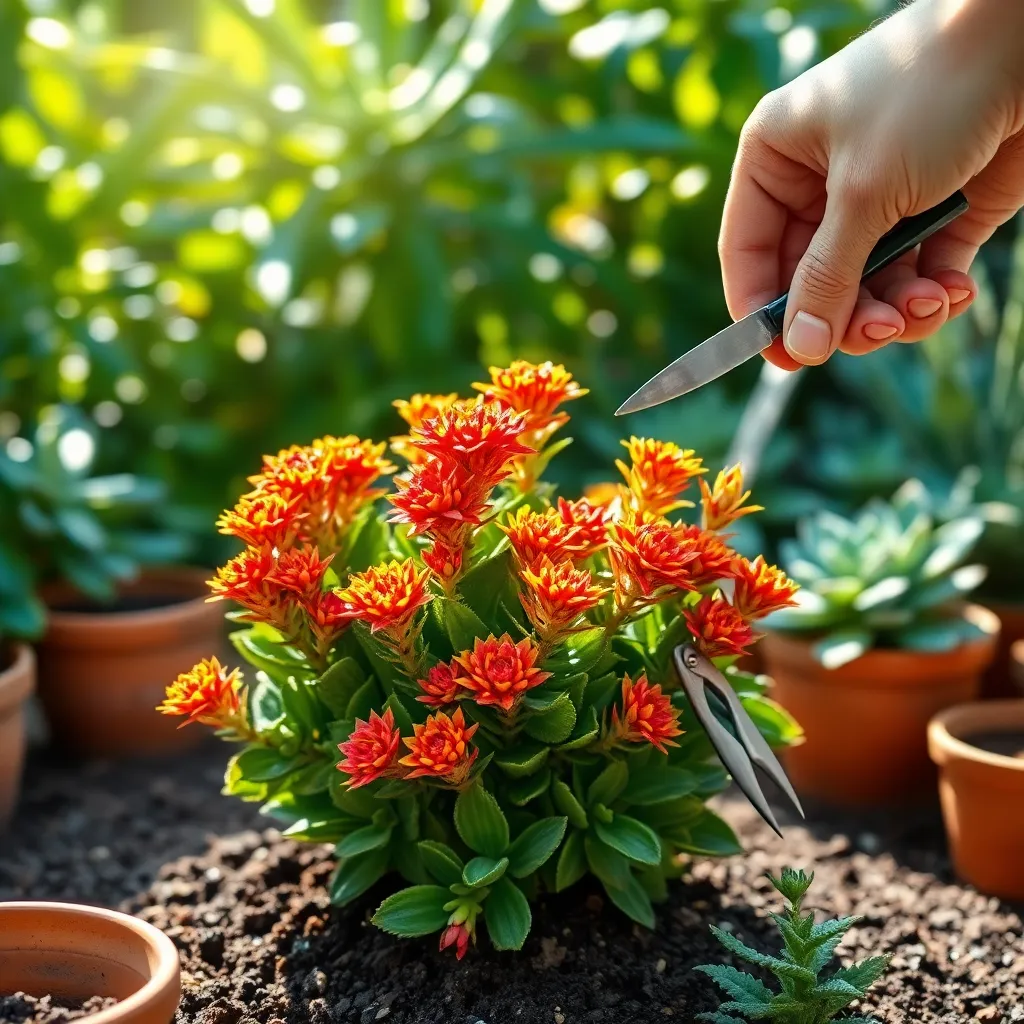
Flaming Katy, or Kalanchoe blossfeldiana, is a vibrant succulent that can brighten any indoor space. Propagation is best done in spring or early summer when the plant is actively growing and the environmental conditions are most favorable.
To propagate Flaming Katy, start by gently removing a healthy leaf from the base of the plant. Allow the leaf to dry and form a callous over a few days, which helps prevent rot when placed in soil.
Once the leaf has calloused, place it on a well-draining soil mix, such as a blend of cactus soil and perlite, to ensure proper aeration. Water sparingly, only when the soil feels completely dry, as overwatering can easily lead to root rot.
For those with more experience, consider using stem cuttings for propagation, which might root faster than leaf cuttings. Ensure the cuttings are taken from a non-flowering stem for the best results, and provide bright, indirect light to promote healthy growth.
Conclusion: Growing Success with These Plants
In “Best Time To Propagate Succulents,” we’ve explored five essential relationship concepts that mirror the nurturing process of succulent propagation. First, timing is crucial; just as succulents thrive in optimal conditions, so do relationships when nurtured at the right moments. Second, patience is a virtue; growth takes time, whether in plants or partnerships. Third, communication is akin to sunlight, essential for flourishing connections. Fourth, adaptability ensures resilience; both succulents and relationships benefit from adjusting to change. Finally, consistency in care fosters lasting bonds, just as regular watering sustains healthy plants.
Now, take a moment to reflect on these principles and identify one area in your relationship that could benefit from immediate attention. Whether it’s scheduling a dedicated time for meaningful conversations or simply being more present, small steps can lead to significant growth.
Be sure to bookmark this article for future reference, as these foundational concepts are worth revisiting. As you embark on this journey of nurturing your connections, remember that relationship success is an evolving process. With dedication and love, your relationships can thrive just like the lushest of succulent gardens. Keep tending to them, and watch them flourish over time.


